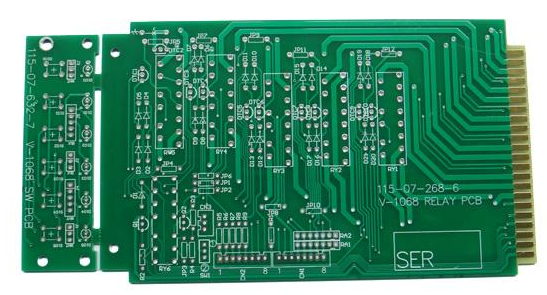The six factors that should be considered when passing the PCB schematic to the layout
When transferring a PCB schematic to the layout design, there are several key factors to consider. All examples provided were created using the MultiSim design environment, but these principles apply to any EDA tool you may be using.
The initial transfer of the schematic to the layout involves passing critical information such as device details, netlist, layout parameters, and initial trace width settings through the netlist file. This ensures that the layout environment has all the necessary data to start the design process accurately.
Here are some recommended steps for the layout phase:
1. Set the grid and units to appropriate values. For finer control over components and traces, consider setting the device grid, copper grid, via grid, and SMD grid to 1 mil. This helps in precise placement and routing.
2. Define the board outline, including blank areas and vias. Many PCB manufacturers have specific recommendations for blind and buried vias, so it's important to align with their specifications.
3. Configure pad and via parameters based on the manufacturer’s capabilities. Most can support small vias with a hole diameter of 10 mils and a pad diameter of 20 mils.
4. Establish design rules that match your project requirements. These rules help ensure that the layout adheres to electrical and mechanical constraints.
5. Customize shortcuts for frequently used layers to make layer switching and via creation more efficient during routing.

During the schematic transfer, one common issue is incorrect or missing package assignments. If a component in the schematic is not properly encapsulated, an alert will appear indicating that the virtual component could not be exported. In this case, no package information is passed to the layout, and the component may be removed entirely.
If the package is passed but the shape doesn't match correctly, a mismatch warning will also be generated. To resolve this, correct the package assignment in the schematic or create a valid package for the component. Then perform a forward annotation to update the layout with the correct information.
Annotation is the process of updating design changes between the schematic and layout. Forward annotation transfers changes from the schematic to the layout, while backward annotation does the opposite. Both are essential for maintaining design consistency.
Before performing any major annotation steps, always back up the current version of both the schematic and layout files. This protects against accidental data loss. Avoid making changes in both the schematic and layout simultaneously. Instead, make changes in one area and then use the appropriate annotation method to synchronize the design.
Device renumbering is a useful feature that allows you to reorder component reference designators on the PCB. Typically, these numbers should be arranged from top to bottom and left to right on the top layer. This makes it easier during assembly, testing, and troubleshooting.
Last-minute changes to devices or netlists are generally discouraged, but sometimes necessary due to component availability issues or late-stage design errors. If you need to make changes, do so in the schematic first and then forward annotate them to the layout. Here are a few tips:
1. When adding a new component after the layout has started (such as a pull-up resistor), add it in the schematic and update the layout. The new component will appear as an unplaced part outside the board's boundary, with a flying lead showing the connection. Move it into the board and route it normally.
2. Backward annotation and reference label updates work well together, especially when renumbering components in the layout.
Another helpful feature is the 'highlight selection' function, which lets you select a component or trace in the layout and view its corresponding position in the schematic. This is particularly useful when matching bypass capacitors with their IC connections. Conversely, you can also locate a component in the layout while browsing the schematic.
Integrated Energy solution with solar power, wind power, battery energy storage system, and diesel and gas generators. application for mobile power porter, household ESS sysytem with battery energy and solar PV unit. peak load for induatial and grid application.
solar power, battery, battery energy storage, CATL, PV Unit, Li(NiCoMn)O2 Battery, LiFePO4 Battery
Guangdong Superwatt Power Equipment Co., Ltd , https://www.swtgenset.com